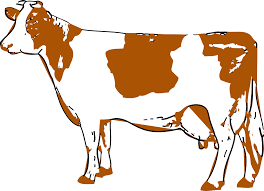📘 قراءة كتاب Bovine mastitis therapy and why it fails أونلاين


La thérapie de la mammite bovine et pourquoi elle échoue من كتب طب بيطرى
Formation continue - Voortgesette opleiding
La mastite bovine et pourquoi elle échoue
J H du Preez
a
INTRODUCTION
La mammite peut survenir à n'importe quel stade de la
vie productive d'une vache . Microbiological Investiga
-
tions de la mammite bovine clinique révèlent un
agent causal dans 75-95% des cas. Il
existe de bonnes preuves que les micro-organismes sont
impliqués dans presque tous les cas
36,40,49
. Au moins
137 causes infectieuses de la mammite bovine
sont connues, mais la majorité des cas sont
causés par seulement quelques bactéries
pathogènes communes , à savoir les staphylocoques, les
streptocoques, les coliformes et les
Arcanobacterium
pyogenes.
Pour que la mastite antibactérienne
réussisse, le médicament actif doit atteindre
et maintenir des concentrations dépassant
la concentration minimale inhibitrice
(CMI) au foyer de l'infection pendant
assez longtemps pour rompre le
cycle de production et de production de toxines du
pathogène responsable
3
. Ceci peut être évité par un
certain nombre de facteurs qui incluent pa mamelle
-
thology et une mauvaise sélection des anti
-
microbiens, et est également influencée par la
voie d'administration. La thérapie peut
avoir de mauvais résultats en raison de lésions tissulaires
et l' introduction de nouvelles infections dur
-
traitement, et / ou l'échec à éliminer
les facteurs de gestion qui prédisposent
à la mammite. Bien qu'il y ait une sous - tendre
-
hypothèse ing que l'objectif principal de la
thérapie de mammites antibactérienne est de tuer bac
-
tères et que la mamelle normale est stérile,
généralement le meilleur qui peut être réalisé est la
réduction temporaire ou la suppression de
la population bactérienne pour permettre à l'hôte
surmonter l'infection. Le mecha
-
nismes pour nettoyer les mamelles sont évidemment
peu développée chez certaines vaches, tel qu'il est
-
devient caduque et réinfections souvent suite à une
antibiothérapie. Infections mammaires
ont tendance à être dynamiques et le stress peut contribuer
à ce que les infections de la mamelle deviennent cliniquement
apparentes
48,49
.
Le but de cet article est de fournir
une mise à jour sur la thérapie de la mammite bovine et les
raisons de son échec.
PRINCIPES DE MASTITE THÉRAPIE
Le succès de la thérapie mastite dépend
du diagnostic correct, la pertinence de
la voie d'administration et le médicament
choisi, stade auquel le traitement est initi
-
ATED, la gravité de la pathologie de la mamelle, sup
-
traitement plices, et l' élimination des
facteurs prédisposants. Il n'y a pas de
traitement standard pour la mammite, mais il est préconisé
que les formes cliniques doivent être traitées en
fonction de la gravité de l
'
inflammation de la mamelle
12
.
La mastite bovine est le plus souvent
traitée par perfusion intramammaire de
médicaments
29,64
. Ceci est la voie de choix dans
subclinique, doux ou modérément sévère
mammites et est utilisé comme adjuvant à l'
administration parentérale dans mastite
. Certains cliniciens préfèrent l' administration intra
-
mammaire, sans
administration systémique, même en cas de
maladie sévère
40
. Pour un
traitement intramammaire efficace , les médicaments devraient distribuer
tout au long de la mamelle et être rapidement ab
-
sorbée dans la circulation sanguine générale
(tableau 1). Peuvent significativement meilleurs résultats
sont obtenus lorsque le médicament est adminis
-
tered intracisternale en 1
de 0,5% glu
-
solution de cose, plutôt que dans 50 m
saline
23
.
L'inconvénient de l' application locale d'
antibiotiques est la dis lente et inégale
-
tribution de certains médicaments dans les personnes infectées
mamelle (tableau 1). Dans les cas de maladie aiguë sévère, la
distribution à travers la mamelle peut être
altérée par l'inflammation ou le blocage des
canaux galactophores par des débris. Administration parentérale
-
tration peut surmonter ces problèmes, al
-
mais il est habituel d'administrer des agents en
même temps que par la intramammaire
voie
17
. Les mamelles gravement enflammées doivent
être traites fréquemment, à l'aide d'
ocytocine si nécessaire. Dans
les cas de mammite clinique aiguë ou aiguë avec signes systémiques,
un
traitement systémique et intramammaire combiné avec des antibiotiques compatibles,
complété par un traitement de soutien,
est recommandé
64
.
Il est toujours souhaitable de traiter la
mammite infectieuse en fonction du
profil de sensibilité aux médicaments antimicrobiens des pathogènes
et de l'expérience clinique
.
. La règle de base dans la
sélection du médicament est d'opter pour
un spectre aussi étroit que possible, de concentrer le
traitement sur un pathogène spécifique et de
minimiser les effets secondaires. Parce qu'il prend le
temps de faire des déterminations de sensibilité, des
antibiotiques à large spectre doit être donné d'
abord pour des raisons pratiques, basée sur la
connaissance des priétés pharmacocinétiques
proprié- des médicaments et la formulation
tion
9,29,32,65,66,67
. En général, à
spectre étroit des antibiotiques sont bactéricides et
ceux qui ont un large spectre sont bactério
-
statique
58
.
La réponse au traitement augmente avec
persistance de l'antibiotique dans la mamelle.
La concentration du médicament utilisé doit
au moins dépasser la valeur MIC pour le
pathogène, mais de préférence aussi le MBC-
valeur (concentration
) dans le pis. Si les médicaments bactériostatiques
sont utilisés, la nécessité de maintenir une haute con
-
centration dans l'organe cible est en
-
froissé.
La réussite intraveineuse ou intramuscu
- le
traitement des mammites lar dépend efficace
passage du médicament du sang dans le lait
pour atteindre les foyers d'infection, qui est en grande partie
régie par la solubilité des lipides, le degré d'
ionisation (dépendant de la dissocia
-
constante constante (pKa)), et l'étendue de
la liaison des protéines du médicament avec le
plasma
44,45,53
, puisque les médicaments traversent la
barrière du lait sanguin par diffusion passive
30
.
Seul le médicament non lié ou libre peut dif
-
fuse à travers la barrière sang et le lait
exercer pharmacologique ou antimicrobien
0038-2809 Jl S.Afr.vet.Ass. (2000) 71 (3): 201-208
201
a
Division du transfert de technologie, ARC -
Institut vétérinaire Onderstepoort , Private Bag X05, Onderstepoort,
0110 Afrique du Sud
Treatment of bovine mastitis depends on the cause, the clinical manifestation and the antibiotic susceptibility of the agent. Mastitis therapy is commonly unsuccessful owing to pathological changes that occur in the udder parenchyma as a result of the inflammatory reaction to mastitogenic bacteria, pharmacokinetic properties of antimicrobial mastitis drugs, mastitogenic bacterial and related factors, and poor animal husbandry and veterinary interventions.
حجم الكتاب عند التحميل : 78.2 كيلوبايت .
نوع الكتاب : PDF.
عداد القراءة:
اذا اعجبك الكتاب فضلاً اضغط على أعجبني و يمكنك تحميله من هنا:

شكرًا لمساهمتكم
شكراً لمساهمتكم معنا في الإرتقاء بمستوى المكتبة ، يمكنكم االتبليغ عن اخطاء او سوء اختيار للكتب وتصنيفها ومحتواها ، أو كتاب يُمنع نشره ، او محمي بحقوق طبع ونشر ، فضلاً قم بالتبليغ عن الكتاب المُخالف:
 قبل تحميل الكتاب ..
قبل تحميل الكتاب ..
يجب ان يتوفر لديكم برنامج تشغيل وقراءة ملفات pdf
يمكن تحميلة من هنا 'http://get.adobe.com/reader/'


 منصّة المكتبة
منصّة المكتبة